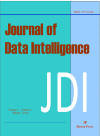An
Approach to Develop Mobile
Proxemic
Applications
(pp166-189)
Paulo Perez, Philippe
Roose, Yudith Cardinale, Mark Dalmau, Dominique Masson, and Nadine
Couture
doi:
https://doi.org/10.26421/JDI2.2-4
Abstracts:
Traditional Human-Computer Interaction (HCI) is being
overpowered by the widespread diffusion of smart and mobile devices.
Currently, smart environments involve daily day activities
covered by a huge variety of applications, which demand new HCI
approaches. In this context, proxemic interaction, derived from the
proxemic theory, becomes an influential approach
to implement new kind of Mobile Human-Computer Interaction (MobileHCI)
in smart environments. It is based on five proxemic
dimensions: Distance, Identity, Location, Movement, and Orientation
(DILMO). However, there is a lack of general and flexible tools and
utilities focused on supporting the development of mobile proxemic
applications. To respond to this need, we have previously proposed a
framework for the design and implementation of proxemic applications
for smart environments, whose devices interactions are defined in
terms of DILMO dimensions. In this work, we extend this framework by
integrating a Domain Specif Language (DSL) to support the designing
phase. The framework also provides an API, that allows developers to
simplify the process of proxemic information sensing (i.e.,
detection of DILMO
dimensions) with mobile phones and wearable sensors. We perform an
exhaustive revision of relevant and recent studies and describe in
detail all components of our framework.
Key words:
Domain specific
language, proxemic interaction, proxemic zone, dilmo, mobile
devices, graphical modelling


